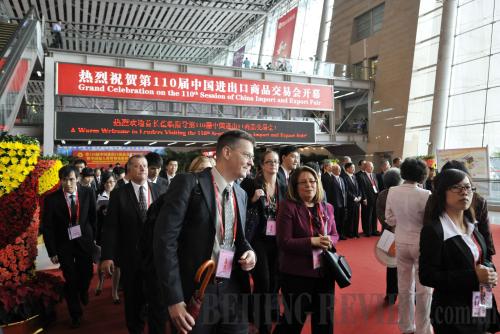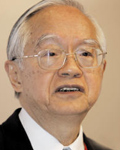|
 |
|
EXPORT BOOM: Foreign buyers attend the 110th Canton Fair, held in Guangzhou, capital of Guangdong Province from October 15 to November 4 (CHEN YEHUA) |
Advocates of the "China model" believe the country's economic success owes to a powerful government tightly controlling the economy. But that model is not without flaws as problems of corruption and the urban-rural divide continue to stretch nerves of policymakers. Wu Jinglian, a renowned economist, discussed these issues in an article recently published in the Caijing magazine. Edited excerpts follow:
 |
|
Wu Jinglian | The past 30 years has witnessed a remarkable take-off of the Chinese economy. In 2010, China surpassed Japan as the world's second largest economy. Meanwhile, the country replaced Germany to become the world's largest exporter.
The economic miracle has sparked a worldwide debate about the development model of China. Many economists attribute the success to China's unique economic and political systems—it has a powerful government and a controlled national economy, so it is more able to formulate and implement strategies in the best of national interests.
In my opinion, the so-called "China model" is only one of the reasons for the country's economic prosperity. Before the reform and opening up started in 1978, the country was still struggling with acute poverty despite a powerful government.
The significant changes started to happen in late 1970s, and accelerated after 1994 when the country pushed forward reforms of enterprises, market systems and the macroeconomic management of the government. In the late 1990s, the Chinese Government decided to adjust the state-owned economy and provide more opportunities for private entrepreneurs to start up their own businesses.
The establishment of market systems was a strong boost to productivity and laid a solid foundation for vibrant economic growth in the 1990s in the following ways:
First, it allowed some room for private businesses. Since mid-1980s, the government has been relaxing restrictions for private investors to enter some state-controlled sectors. In 1997 the Chinese leadership recognized that the non-state economy is an indispensable part of the socialist market economy.
Entrepreneurship swept through the country. By the end of 1990s, there were more than 30 million privately owned enterprises across the nation. The thriving private economy became a driving force for China's development.
Second, it strengthens utilization of human and material resources. Under the past planned economic system, the government mobilized social resources and forced investments to promote industrialization, which actually impeded overall economic efficiency and the pace of industrialization and urbanization.
But when market-oriented economic systems were established, factors of production (FOP), including land, labor and capital, started flowing from less-efficient sectors to highly-efficient ones.
For example, the enormous rural surplus labor force—around 250 million people, have migrated into cities in the past three decades. Meanwhile, around 70,000 square km of rural land, equal to the area of Ireland, have been used for urban construction.
The FOP shift led to an increase in total factor production (TFP), injecting fresh steam into the economy. (TFP is the portion of output not explained by the amount of input used in production. As such, its level is determined by how efficiently and intensely the input is utilized in production.)
Third, the opening-up policy stimulated export growth, making up for the weakness of domestic consumption and propping up the high growth of the Chinese economy.
China's consumption remained lackluster in comparison to expanding investments. But this investment-dependent growth model is not sustainable.
In the 1990s, China made vigorous efforts to spur exports to developed countries where consumers kept low savings rates. The surging net exports compensated for tepid domestic demand and helped maintain rapid economic growth.
Fourth, the opening-up policy allowed China to introduce advanced foreign equipment and technologies. This helped China to quickly catch up with developed countries in terms of technological prowess and provided firm support to the economy.
All those facts prove that reform and opening up was the real secret to China's economic success.
| 